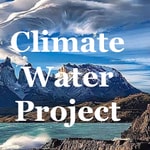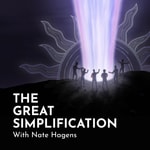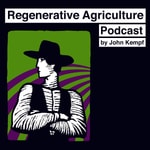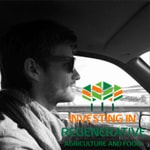Climate Water Project – Détails, épisodes et analyse
Détails du podcast
Informations techniques et générales issues du flux RSS du podcast.

Climate Water Project
Alpha Lo
Fréquence : 1 épisode/32j. Total Éps: 33

How we can restore our water cycles. A look at rain, groundwater, the small water cycle, how we can hydrate our landscapes.
Classements récents
Dernières positions dans les classements Apple Podcasts et Spotify.
Apple Podcasts
🇨🇦 Canada - nature
05/08/2025#47🇨🇦 Canada - nature
10/07/2025#96🇨🇦 Canada - nature
09/07/2025#76🇨🇦 Canada - nature
08/07/2025#69🇨🇦 Canada - nature
07/07/2025#61🇨🇦 Canada - nature
06/07/2025#52🇨🇦 Canada - nature
05/07/2025#44🇬🇧 Grande Bretagne - nature
03/07/2025#98🇬🇧 Grande Bretagne - nature
02/07/2025#80🇬🇧 Grande Bretagne - nature
01/07/2025#65
Spotify
Aucun classement récent disponible
Liens partagés entre épisodes et podcasts
Liens présents dans les descriptions d'épisodes et autres podcasts les utilisant également.
See all- https://climatewaterproject.substack.com
4 partages
- https://alvelal.es/
4 partages
- https://www.youtube.com/@amillison
7 partages
- https://www.patreon.com/watercology
5 partages
- http://www.patreon.com/watercology
1 partage
Qualité et score du flux RSS
Évaluation technique de la qualité et de la structure du flux RSS.
See allScore global : 43%
Historique des publications
Répartition mensuelle des publications d'épisodes au fil des années.
The Joy of Restoring Water Cycles : Nick Steiner
jeudi 27 juin 2024 • Durée 01:19:24
Nick Steiner is a water management consultant at PermaNick , and works at Water Stories, which trains people in the ways of water management. For the essay on this podcast see Climate Water Project
Investing in water and regenerative agriculture : Koen van Seijen
mardi 7 mai 2024 • Durée 01:36:01
Koen van Seijen is the host of the "Investing in regenerative agriculture and food" podcast, and also manager at Toniic, an impact investment organization. We discuss various ways of funding the regenerative agriculture as well as the regenerative water movement. for interview also see the Climate Water Project Newsletter . The "Investing in regenerative agriculture and food" podcast page is here . You can support this podcast by subscribing to the Climate Water Project newsletter, or on Patreon
Beavers, biology, and slow water : Brock Dolman
jeudi 8 juin 2023 • Durée 01:14:03
Brock Dolman is a conservation biologist and permaculture teacher who coined the phrase "Slow it, sink it, spread it" and helped co-found the Occidental Arts and Ecology Center and the Water Institute https://oaec.org/our-work/projects-and-partnerships/water-institute/
His organizations work helped bring back the beaver in California, and has helped communties restore the water cycle in their neighborhoods. The template for neighborhood watershed restoration is here https://oaec.org/publications/basins-relations-citizens-guide-2018/
You can read his interview here https://climatewaterproject.substack.com/p/beavers-biology-and-slow-water-brock#details
You can subscribe to the Climate Water Project https://climatewaterproject.substack.com
You can support me on Patreon at https://www.patreon.com/watercology
The Water Tale : a rap song
vendredi 31 mars 2023 • Durée 04:19
Teisho and Alpha rap about the water cycle.
For more info : https:climatewaterproject.substack.com
www.instagram.com/climatewaterproject
If you would like to support this project https://www.patreon.com/watercology
Charles Eisenstein: Water and the Living Earth
vendredi 17 mars 2023 • Durée 57:54
Charles Eisenstein is the author of "Climate", "Ascent of humanity", "The more beautiful world that we know". He discusses the importance of water to our ecosystems and the climate, and how we can heal our relationship to the environment.
You can see the article at the Climate Water Project newsletter https://climatewaterproject.substack.com/p/charles-eisenstein-water-and-the#details
You can support this work at www.patreon.com/watercology
Instagram: www.instagram.com/climatewaterproject
Biotic pump -how forests create rain :Anastasia Makarieva
samedi 3 décembre 2022 • Durée 01:37:50
Forests evapotranspire water vapor. When that vapor condenses to form clouds it creates a lessening of pressure which can then attract more moisture from the ocean. Anastasia Makarieva and Victor Gorshov discovered this effect called the Biotic Pump
Regreening the Sinai : Ties van der Hoeven
mercredi 30 novembre 2022 • Durée 01:18:02
An ambitious project to regreen the Sinai desert in Egypt is underway. It involves 1) restoring Lake Bardawil at the northern tip of the Sinai 2) turning the sediment from the lake into soil which is then used to jump start the regreening process in the desert. Creating temporary ecosystems in geodesic domes that catalyse the ecosuccession process 3) a shift in the rain and wind patterns that result from the regreening
Communities can protect themselves against floods and droughts : Minni Jain
mercredi 26 octobre 2022 • Durée 01:17:20
Minni Jain is the founder of the Flow Partnership, an organization that has helped thousands of communities in India and Britain protect themselves against floods and droughts, by the use of simple watercatchment structures that can slow, sink, and spread the rainfall as it comes down.
How to replenish our groundwater : Helen Dahlke
mercredi 26 octobre 2022 • Durée 01:08:14
Professor Helen Dahlke, of the University of California of Davis, has been leading the (re)charge to replenish California’s groundwaters. She has teamed up with farmers, to guide the excess water from the winter rains to flood farms, thus creating temporary wetlands. Over days and weeks, that water then sinks down to replenish the aquifers.
In this podcast Helen Dahlke shares about her research, the groundwater situation in California, the quest to replenish its aquifers, the droughts and intermittent large rains, the wetlands and floods, and the interdiscplinary efforts to bring back nature-based solutions to our water needs all over the world.
How forests increase rain : Francina Dominguez
mercredi 26 octobre 2022 • Durée 01:03:52
Francina Dominguez, a hydroclimatologist at the University of Illinois has been figuring out where our rain comes from. She has been tracking water as it moves across our continents. The process of moisture hopping, or moisture recycling (also known as the small water cycle in other circles), is the movement of water from air to land to air to land and so on - rain falls to the land, and then evapotranspires back up to form rain again.
She studied the droughts in the US Midwest in 2012, and found that the droughts there were related to the drought in California. Rains hop inland from California to the Midwest. When there is less water vapor in California, there will be a less moisture hopping inland. [1]
Francina Dominguez has also been researching the behavior of rain in South America. Having grown up in Colombia, which is home to part of the Amazon rainforest, she was motivated to stop it from being chopped down. When she became a hydroclimatologist, she used climate models to study the effect Amazonian deforestation would have on the water cycle.
Her simulations found something quite surprising.
Climate modelers do not always know what effects will emerge out of their models. They put in various equations and various parameters into their models, and then they wait for it to emerge a result. When Francina Dominguez modeled deforestration in the Amazon she was expecting to find that moisture recycling (aka the small water cycle) would decrease as forests were chopped down. What she instead found, to her surprise, was that the moisture recycling stayed the same, and it was the wind that increased. When the trees were cut down, the wind blew in faster which made it harder for the water vapor molecules to coalesce to form rain. Deforestation led to wind increase, and the wind increase led to rain reduction. Or to state it another way as a maxim - forests makes less wind, less wind makes more rain. [2,3,4,5,6]
Francina Dominguez has also studied the interaction of groundwater and climate. At first glance it might seem that groundwater would not affect drought and rainfall patterns. After all groundwater is underground and not touching the air. But water is a complex systems phenomena, understanding one part often requires understanding how all the parts fit together. What Francina found in her models was that groundwater would have a significant effect on rain, because it was being brought up by the root systems of the vegetation, and then would evapotranspire into the air to increase the moisture content in the air. Groundwater levels thus affect drought and rainfall patterns. [7,8]
References
[1] Herrera‐Estrada, Julio E., J. Alejandro Martinez, Francina Dominguez, Kirsten L. Findell, Eric F. Wood, and Justin Sheffield. "Reduced moisture transport linked to drought propagation across North America." Geophysical Research Letters 46, no. 10 (2019): 5243-5253.
[2] Eiras-Barca, J., Dominguez, F., Yang, Z., Chug, D., Nieto, R., Gimeno, L. and Miguez-Macho, G. (2020), Changes in South American hydroclimate under projected Amazonian deforestation. Ann. N.Y. Acad. Sci., 1472: 104-122. https://doi.org/10.1111/nyas.14364
[3] Sud, Y. C., Shukla, J., & Mintz, Y. (1988). Influence of Land Surface Roughness on Atmospheric Circulation and Precipitation: A Sensitivity Study with a General Circulation Model, Journal of Applied Meteorology and Climatology, 27(9), 1036-1054. Retrieved Oct 6, 2022, from https://journals.ametsoc.org/view/journals/apme/27/9/1520-0450_1988_027_1036_iolsro_2_0_co_2.xml
[4] Yang, Zhao, and Francina Dominguez. "Investigating land surface effects on the moisture transport over South America with a moisture tagging model." Journal of Climate 32, no. 19 (2019): 6627-6644.
[5] Chug, Divyansh, Francina Dominguez, and Zhao Yang. "The Amazon and La Plata River Basins as Moisture Sources of South America: Climatology and Intraseasonal Variability." Journal of Geophysical Research: Atmospheres 127, no. 12 (2022): e2021JD035455
[6] Martinez, J. Alejandro, and Francina Dominguez. "Sources of atmospheric moisture for the La Plata River basin." Journal of Climate 27, no. 17 (2014): 6737-6753
[7] Martinez, J. Alejandro, Francina Dominguez, and Gonzalo Miguez-Macho. "Effects of a groundwater scheme on the simulation of soil moisture and evapotranspiration over southern South America." Journal of Hydrometeorology 17, no. 11 (2016): 2941-2957.
[8] Martinez, J. Alejandro, Francina Dominguez, and Gonzalo Miguez-Macho. "Impacts of a groundwater scheme on hydroclimatological conditions over southern South America." Journal of Hydrometeorology 17, no. 11 (2016): 2959-2978









